AMD Radeon HD 7870 GHz Edition & Radeon HD 7850 Review: Rounding Out Southern Islands
by Ryan Smith on March 5, 2012 12:01 AM ESTMeet The Radeon HD 7870 & Radeon HD 7850
For today’s review AMD sent over a 7870 and a 7850. Both are built on the 7870 reference design, so the cards are functionally identical except for the configuration of their respective GPU and the number of PCIe power sockets present.
For retail cards this will be very similar to the 7700 series launch, with partners doing semi-custom cards right away. In fact among the list of cards AMD sent us only Club3D will be using the complete 7870 reference design, while everyone else will be using the reference PCB along with their customary open air coolers. The 7850 will be even more divergent since AMD actually has a different, shorter reference PCB for these cards. Consequently our 7850 has very little in common with retail 7850s when it comes to their construction.
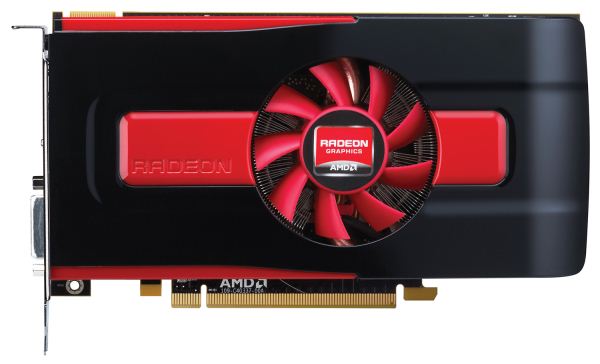
The Radeon HD 7850 Reference Design - Only Sampled To Partners
Starting as always with the cooler, the 7870 reference design is effectively a smaller version of the 7970 reference design. Here AMD is once again using a blower design with a slightly smaller blower, shrouded in the same hard red & black plastic as with the 7900. Underneath the shroud we find AMD’s heatsink, which utilizes a copper baseplate attached to 3 copper heatpipes, which in turn run into an aluminum heatsink that runs roughly half the length of the card. This is fairly typical for a blower design for a sub-200W card, but again almost all of the retail cards will be using a completely different open air design.
The 7870 PCB itself runs 9.5” long, with an additional .25” of shroud overhang bringing the total to 9.75”. Our card is equipped with 8 5GHz 256MB Hynix GDDR5 memory chips, the same 5GHz chips that we saw on the 7700 series. For the 7870 power is provided by a pair of 6pin PCIe power socket, while the sub-150W 7850 uses a single socket. Both cards feature a single CrossFire connector, allowing them to be paired up in a 2-way CrossFire configuration.
Meanwhile for display connectivity AMD is using the same configuration as we’ve seen on the 7900 series: 1 DL-DVI port, 1 HDMI port, and 2 miniDP ports. Interestingly, unlike the 7900 series and 7700 series there is a set of pads for a second DVI port on the card, and while AMD doesn’t make use of them at least one XFX card will. The 7800 series as the same display configuration options as the 7900 series though, so while it can drive up to 6 monitors it can only drive 2 TMDS type displays at once, and if you want to drive a full 6 monitors you’ll need a MST hub.
Finally, I wanted to touch on marketing for a bit. We typically don’t go into any detail on marketing, but with the 7800 something AMD did caught my eye. One of AMD’s marketing angles will be to pitch the 7800 series as an upgrade for the 5800 series; AMD doesn’t typically pitch cards as upgrades in this manner, and the 5800 comparison is especially odd.
At 2.5 years old the 5800 series is no longer the video card king but it’s also not particularly outdated; other than tessellation performance it has held up well relative to newer cards. More specifically, the 7800 series performance is roughly equal to the 6900 series, and while the 6900 series as a step up from the 5800 series it was not a massive leap. With its $350/$250 MSRP the 7800 series has common pricing with the 5800 series, but at only 20-40% faster than the 5800 it’s not the kind of step up in performance that typically justifies such a large purchase. Of course AMD’s conservative pricing has a lot to do with this, but at the end of the day it’s odd to call the 7800 series the upgrade for the 5800 series when the 7950 is the more natural upgrade from a performance perspective.


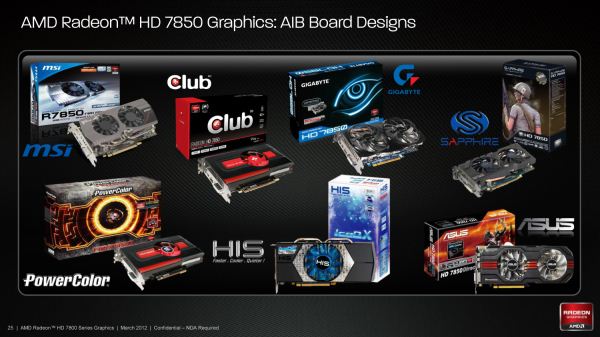
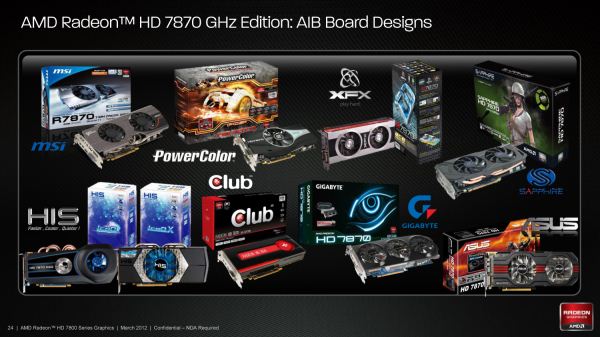

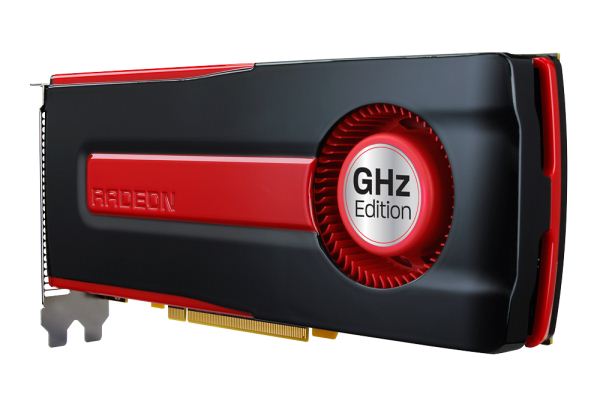












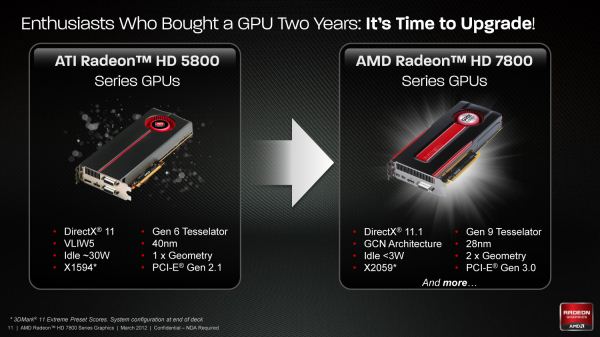








173 Comments
View All Comments
Kiste - Monday, March 5, 2012 - link
So, how many people do you know who would spend a few hundred bucks for a performance "sidegrade" that saves them a few bucks per year on their energy bill?Price/performance is still the relevant metric for most people, with everything else being secondary. Not unimportant, but secondary. Noise can also be addressed on cards with high power draw by buying a card with a custom cooler or using a 3rd party cooler.
Kaboose - Monday, March 5, 2012 - link
Some people are just entering the market, some people are coming from 3+ generations ago, some people are looking for HTPC's that can game and need low power and low temp cards that provide solid performance. It isn't a sidegrade for someone who is coming from integrated graphics or maybe a 7800GT etc. It is easy to think that everyone who buys these types of GPU's are knowledgeable and already have high performing GPU's. But that just isn't the case a lot of the time. If you have a high end 5xxx or a mid-high range 6xxx GPU already then there is no reason to upgrade, frankly with the 68xx series AMD isn't looking to grab that market.Kiste - Monday, March 5, 2012 - link
If you're looking for great price/performance, there are plenty of cards that offer more bang for your bucks.If you're looking for raw performance, you look elsewhere, too.
Though I'll happily concede that the 7850/7870 are great absolutely fabulous for everyone who is building a "HTPC that can game".
medi01 - Monday, March 5, 2012 - link
And exactly where do you look for raw performance, pretty please? Maybe at nVidia 570, that costs 80$, consumes more energy yet is outperformed in most tests by 7850?Kiste - Monday, March 5, 2012 - link
Where would you look for raw performance? How about the 79xx line?And what the hell are you talking about anyway? The 7850 does not "outperform" the 570 in most tests, unless you're again back at comparing an overclocked card to a non-overclocked card. Most 570 cards can do a 15-20% OC easily, btw.
Hell, I bought my GTX570 about 12 months ago for €289. And I'm supposed to be blown away by something like the 7870 in 2012?
The GTX570 became available about 14 months ago. It took AMD 14 frigging month to come up with a card like the 7870 that is 9% faster on average at the same price point?
Gee, what a marvel of technology.
krumme - Monday, March 5, 2012 - link
570 is 250% larger and 9% slowerIts a giant leap
talk about marvel of technology
Your card is tech from stone age compared to a 7870.
Old tech is old
SlyNine - Monday, March 5, 2012 - link
I'm running a 5870 which is basically 75% the performance of a 7970, and I paid 379 for the 5870. Which is also 75% of the cost of a 7970. The price of a 7970 is basically the exact same price structure as the 2 1/2 year old 5870, So we are stuck where we were in 2009, yay.Yea we are sure moving forward...
morfinx - Monday, March 5, 2012 - link
75% performance of 7970 would mean that it's 33% faster than a 5870. And that's just not accurate. I have a 5870 as well, so I was paying a lot of attention on how much faster the 7970 is in various reviews. Everything I've read indicates that it's anywhere from 70-110% faster at 2560x1600 resolution (I run 3600x1920, so likely even even more of a difference). That's not even even considering the massive overclocking headroom of the 7970 vs barely any OC headroom of the 5870. Overclocked, a 7970 is easily twice as fast as a 5870.RaistlinZ - Monday, March 5, 2012 - link
This is true. I came from a 5870 to a 7970 and at 2560x1600 the 7970 is easily twice as fast.And that's even before overclocking. My 5870 could barely overclock for crap, whereas my 7970 overclocks 27% on core and 18% on memory.
SlyNine - Thursday, March 8, 2012 - link
Not according to Anandtechs benchmarks.